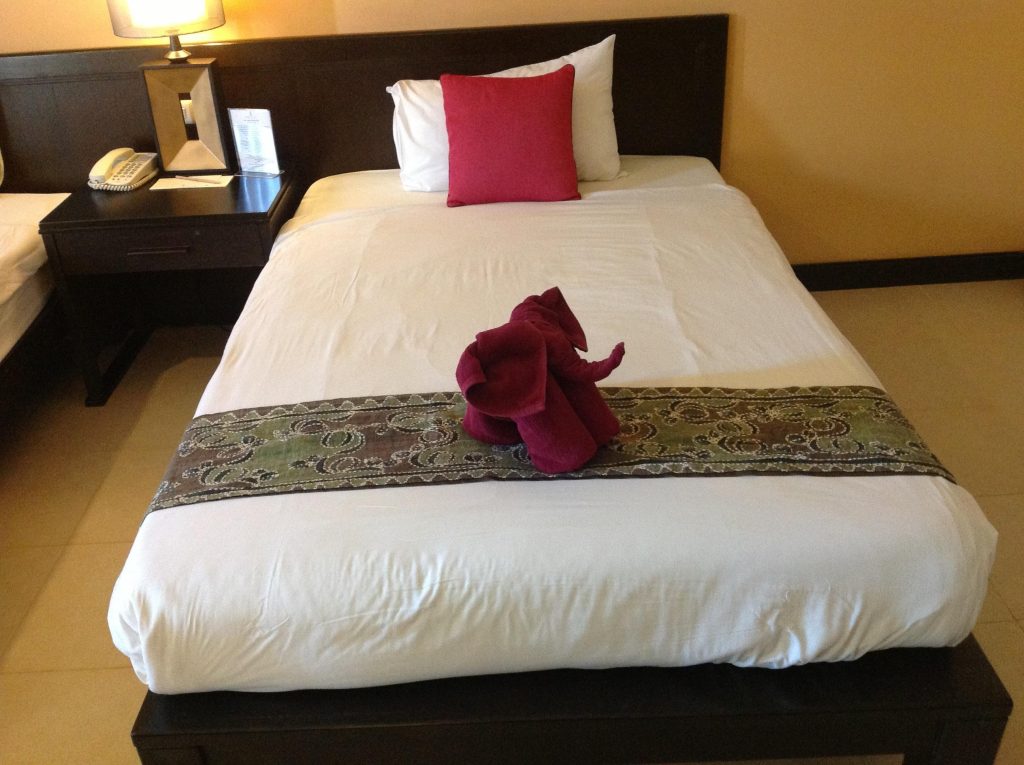If you’ve ever stayed in a hotel, you’ve probably noticed a thin, colorful strip of fabric draped neatly across the foot of the bed. It’s often referred to as a bed runner or decorative bed scarf. While it may seem like just a piece of fabric added for visual appeal, this unassuming detail actually serves several practical purposes.
Let’s dive deeper into why hotels include this fabric strip and how it enhances both aesthetics and functionality in hospitality settings.

First and foremost, the bed runner is a design element. Hotels aim to make their rooms visually appealing to create a welcoming, luxurious environment. The bed is often the focal point of the room, and a runner helps elevate the presentation. Whether it matches the curtains, artwork, or room theme, the runner adds a splash of color or pattern that breaks up the plain look of white sheets.
It can give the room a more polished, high-end feel without the need for full decorative bedding that is harder to clean and maintain. It’s a small but effective way for hotels to incorporate branding or a sense of identity into the room’s interior design.
While it might look like it’s only there for decoration, the bed runner also has a more practical use: protecting the bedding. Guests often place their luggage or sit on the edge of the bed when they enter a hotel room. Instead of dirtying the freshly laundered sheets or duvets, guests are more likely to touch or use the bed runner.
This makes cleaning and maintaining the bed easier and more efficient for hotel staff. Rather than changing the entire duvet cover or bedspread, the runner—which is much smaller—is easier and cheaper to clean or replace if it gets soiled or worn out.
The bed runner can also provide a bit of extra warmth for guests who don’t want to get under the full blanket. On cooler nights, guests may pull the runner over their feet or legs while lounging on the bed watching TV or reading.
Though not thick enough to serve as a blanket on its own, it can be a cozy touch that adds a bit of comfort without overwhelming heat, especially in warmer climates where full bedding might be too much.
Another overlooked reason for the presence of the bed runner is the message it sends: cleanliness and attention to detail. A perfectly laid runner signals that the bed was made with care. It’s a visual cue that the room has been thoroughly cleaned and prepared for the next guest.

In luxury hotels especially, these small touches can make a significant difference in guest perception. The runner is part of an overall effort to create a sense of order, style, and cleanliness.
Some hotels go a step further and use runners that feature embroidered logos, specific colors, or patterns that reflect the brand’s identity. It’s a subtle but effective way to reinforce brand recognition. For boutique or themed hotels, the runner can help communicate the concept or mood of the room, from modern and minimalistic to rustic or romantic.
Though often overlooked, the fabric strip across the bottom of a hotel bed is more than just decoration. It serves a multifaceted role: enhancing design, protecting bedding, improving cleanliness, adding comfort, and even reinforcing brand identity.
Next time you check into a hotel, take a moment to appreciate this small but purposeful detail—because even the simplest elements in hospitality design are there for a reason.

















